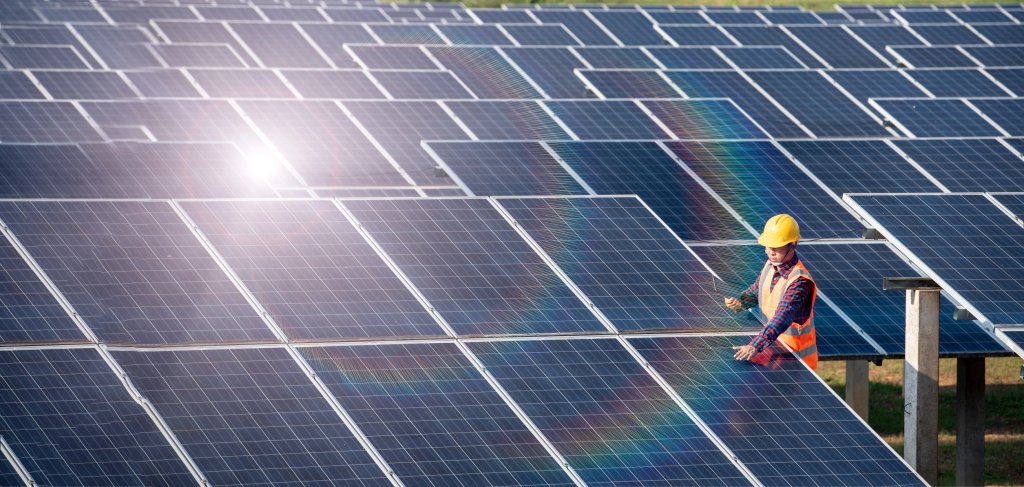5:40
Commentary
Commentary
Think renewable energy won’t work? Check out Denmark
Kentucky, U.S. face competitive disadvantage because of antiquated electrical infrastructure built for fossil fuels
East Kentucky Power Cooperative powers the lives of 1.1 million Kentuckians through 16 cooperative members. The energy source is coal and natural gas.?
Power travels through 2,800 miles of high-voltage transmission lines from Maysville and Somerset to reach 370 substations and 560,000 members. EKPC highlights its commitment to environmental stewardship with electricity generated at the 60 acres of Solar Farm One in Winchester, powering 1,000 homes.
In the February issue of “Kentucky Living,” the president and CEO of East Kentucky Power Cooperative, Tony Campbell, talks about his six letters to President Biden, stressing “the life-or-death consequences of the U.S. prematurely shutting down traditional power plants while allocating hundreds of billions of taxpayer dollars to incentivize unreliable alternatives.” (By traditional he means those that burn fossil fuels.)
He elaborates on what he calls “the renewables dilemma.” Renewable energy can’t work because it only works when the weather cooperates,?which he says is unlike fossil fuels that give you the the power you need when you push the button. Mr. Campbell also complains that there is a lack of natural gas lines to transmit gas following the conversion of coal plants.
What Mr. Campbell describes are an antiquated energy infrastructure and a fossil-fuel dilemma.?
For decades, utility companies continued to fund the expansion of fossil fuels over sustainable energy and resilient infrastructure. As a result, today’s situation is impeding future economic growth opportunities, which could make the U.S. less competitive in a world where sustainable performance is becoming a solid competitive parameter. That’s a dilemma.
When renewable energy is discussed, the focus tends to be on generation, but it should simultaneously be on transmission and interconnection.?
The lack of congressional collaboration and unity on upgrading the power infrastructure over some 30 years has prevented U.S. investors from executing long-term investment projects to update the transmission and regional power grid.?
Above all, the power grid was built for fossil fuels. Renewable energy works differently. You generate in multiple geographic locations to provide diverse sourcing options where there’s wind, sunshine, or hydro activity. Resilience is built by integrating the transmission system and expanding connections between regions and price zones. Distributed energy, like rooftop solar and solar merchant farms, contributes to resilience.?
So what does “the world’s most sustainable electric utility” look like??
That’s the title of the “Corporate Knights’ Global 100 Index” granted to the Danish utility Orsted, formerly Danish Oil and Natural Gas. In 2012 fossil fuel and natural gas were traded to invest in windmills and solar. Presently renewables cover 88% of all generation, primarily offshore wind supplemented with solar and sustainably produced biomass. Orsted generates and transmits electricity to more than 11 million homes from Norway to Southern Germany and the UK. Orsted is also the world’s largest windmill developer, with several projects in the U.S. Renewables overall in Denmark constitute 70% of electricity.?
The key to success was continuing investments in long-distance transmission, interconnections between regions and countries, and variable energy resources to offset weather patterns and varying power needs. All power lines and 25% of high-voltage transmission lines are underground. Surplus is used to produce hydrogen directly from windmills.?
In Kentucky, the East Kentucky Power Cooperative’s “grid resiliency strategy” is about “readiness for disasters and restoring operations quickly.” It doesn’t go beyond a commitment to “replacing wood poles with steel posts in hard-to-reach areas“ and providing 10% energy from renewables by 2030 and 15% by 2035.?
Kentucky still lives in the past with no clean energy standards. Therefore, a company this size, with a varying electricity cost of 9 cents to 14 cents per kilowatt hour, should have clearly stated strategies in its Integrated Resource Plan (IRP) to attract investors. But Mr. Campbell’s IRP has none.??
Plenty of dilemmas exist. Kentucky’s energy and environmental needs are more like an uphill drive with the brakes on thanks to irrevocable vested interests. And here’s the real dilemma: Climate change impedes economic growth, and investments are less when economic growth is slow. But investments are needed to fight climate change.?
Our stories may be republished online or in print under Creative Commons license CC BY-NC-ND 4.0. We ask that you edit only for style or to shorten, provide proper attribution and link to our website. AP and Getty images may not be republished. Please see our republishing guidelines for use of any other photos and graphics.
Kris O'Daniel
Kris O'Daniel, a native of Denmark with a background in dairy science and engineering, is owner with her husband of Zelma Farm, a cow-calf operation producing beef cattle seed stock in Washington County. Her first employment was as an associate expert at the United Nations Food and Agricultural Organization (FAO) in Chiang Mai, Thailand, conducting training courses in the Far East. Kris has been active on environmental boards. In her spare time, she enjoys making one-of-a-kind wooden furniture sourced from the farm and is an adjudicated artist in Kentucky Crafted.






Kris O'Daniel